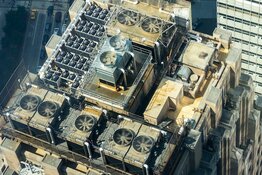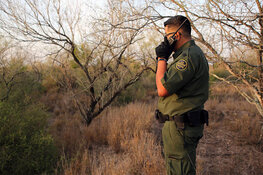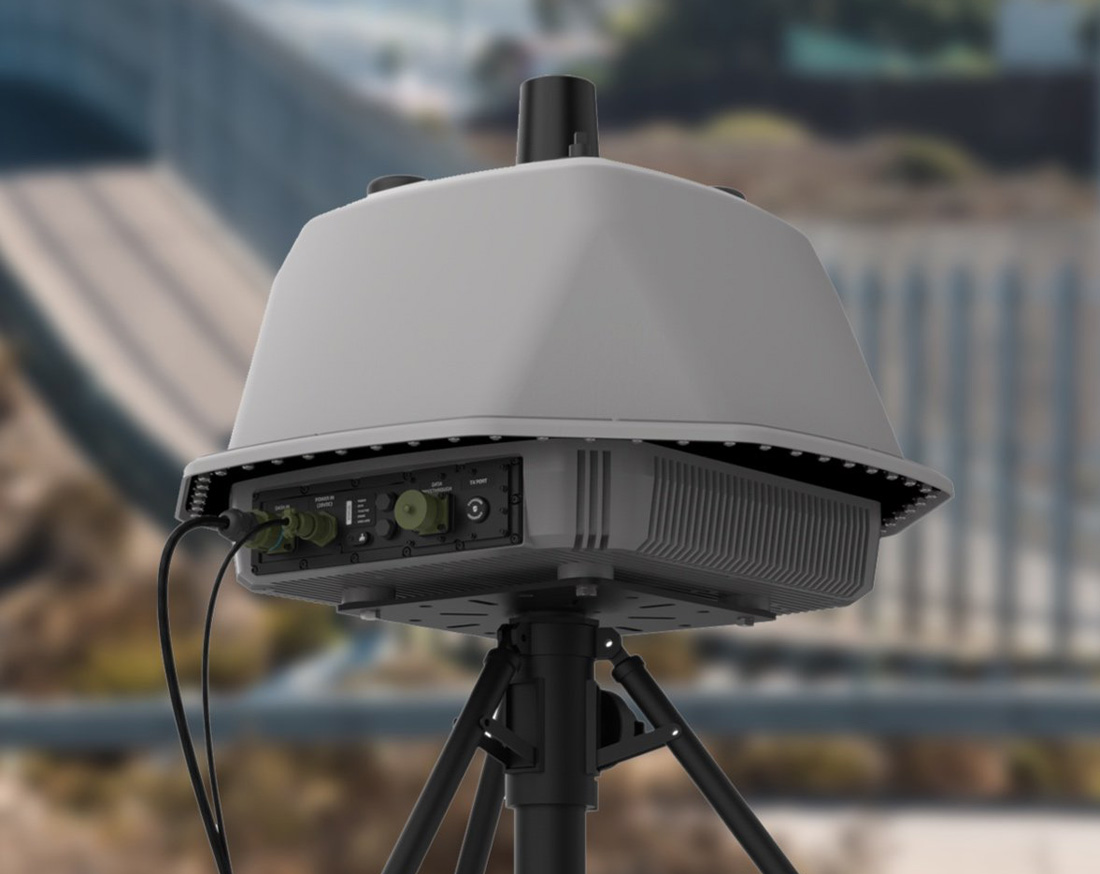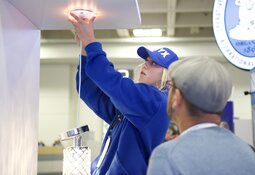Hamas' attack on Israel shocked the world with more than 1,400 people killed, but experts say it's the method used to carry out part of the strike that is signaling the shifting strategies of warfare.
Hamas deployed weaponized off-the-shelf drones to incapacitate some of Israel's static defenses, which cost millions. You can see more here.
Retired U.S. Air Force Maj. Gen. Kenneth Israel, writing for The Messenger, noted that today's drones incorporate "robotics, payloads, and sophisticated software programs." Militaries are looking at new ways to defend against them. The United States is evening opening a new school to deal with the threat, and companies are stepping up with solutions.
"The advancement of unmanned-system technologies over the past 30 years is unprecedented, and their special military mission applications are now being kept as closely guarded secrets," Israel said. "Planners can be assured that such unmanned-system tactics used by Hamas will be replicated in future terrorist and unconventional war attacks. We have moved from steel, oil, and manpower being the sole determinants of overall military capability to equal focus on drones with embedded, highly sophisticated electronic packages."
A recent report by Allied Market Research noted that "the global anti-drone market size was valued at US$1.3 billion in 2021 and is projected to reach US$14.6 billion by 2031, growing at a CAGR of 27.9% from 2022 to 2031."
Weaponized commercial drones available in electronics stores ("the types used by YouTube and Instagram bloggers to make reels," according to a report on New Delhi TV) have also been seeing use in the war in Ukraine.
"The outnumbered Ukrainian forces have been using small drones fitted with improvised hand grenades and mortar rounds to drop on the armored elements of the invading Russian military," the NDTV report noted. "This tactic is said to be very effective."
The unmanned vehicles are being "used on a scale that has never been seen before," Stacie Pettyjohn, a senior fellow and director with the Center for New American Security, told NPR. Both sides in Ukraine also routinely use small drones to lock down each other's locations or drop small bombs.
The Catalyst: Countering Threat Is Critical
Unprecedented in tactics and scale, militants from Gaza fired thousands of rockets at Israel on October 7 before breaking through a heavily fortified border fence and sending fighters into Israeli territory. In addition to those killed, Israeli authorities said nearly 200 hostages were taken, including as many as 20 Americans, CNN reported.
For its part, Israel has said it is "at war" and has cut off supplies of food, fuel, electricity, and medicine to Gaza, which has an estimated population of about 2.3 million.
The U.S. military said countering such drone activity has become critical. Col. Glenn Henke, a deputy director at the U.S. Army's Joint Counter-small UAS (Unmanned Aircraft Systems) Office, told NPR the Pentagon had been planning a counter-drone university at Fort Sill in Oklahoma since before the Ukraine war. The first classes begin this month.
"There's no silver bullet in any of this," Henke told NPR. "There's no one system that will do everything. So, you have to have a system of systems approach, and that allows us to address the threats that can be employed against us and our allies."
Market Is Growing Quickly
All of this points to a market for anti-drone technology that is growing. Market size is projected to reach US$3.8 billion by 2027 from US$1.47 billion in 2023, growing at a compound annual growth rate (CAGR) of 27.7% during the forecast period, analysis firm Markets and Markets predicted.
A recent report by Allied Market Research noted that "the global anti-drone market size was valued at US$1.3 billion in 2021 and is projected to reach US$14.6 billion by 2031, growing at a CAGR of 27.9% from 2022 to 2031."
Also, Fortune Business Insights reported that "the global anti-drone market size was valued at US$1.34 billion in 2021 and is projected to grow from US$1.58 billion in 2022 to US$6.95 billion by 2029, exhibiting a CAGR of 23.55% during the forecast period. The global COVID-19 pandemic has been unprecedented and staggering, with Anti-Drone experiencing higher-than-anticipated demand across all regions compared to pre-pandemic levels."
DroneShield Ltd.
Well-positioned for the upside here is anti-drone defense company DroneShield Ltd. (DRO:ASX; DRSHF:OTC), which develops technologies to protect people, vehicles, and installations from UAS. It provides artificial intelligence-based platforms for protection against drone threats and other hostile autonomous systems with products designed for a variety of terrestrial, maritime, and airborne platforms.
DroneShield provides both custom counter-drone and electronic warfare solutions and off-the-shelf products designed to meet a variety of terrestrial, maritime, and airborne requirements. Its more notable products include the DroneGun Tactical, DroneGun MK3, DroneGun MK4, DroneSentry, DroneSentry-C2, DroneSentry-X, and RfPatrol.
Recently, the company introduced a new detection and adaptive disruption system for tracking multi-domain unmanned systems, the DroneSentry-X Mk2.
"The DroneSentry-X Mk2 can be mounted to standard vehicle roof racks, on military vehicles, surface vessels, and unmanned mobile platforms," the company said in a release. "It can also be deployed as a permanent or fixed site install on standard tripod masts or towers and supports local or remote operations."
The company said it has seen "explosive growth" this year and has expanded its U.S. headquarters in Northern Virginia and added top talent to its team.
DroneShield secured an AU$33 million government sale, an AU$9.9 million 2-year R&D contract, an AU$40 million capital raise, and expanded to 90 employees spread across operations in both Sydney and Virginia. It has been working through an AU$62 million order backlog backed by an AU$200 million pipeline.
Over the coming half decade, the company hopes to expand to employ some 120 to 150 staff supporting revenue of AU$300 million to AU$500 million per year, with roughly half of that income generated via software as a service (SaaS) and software R&D channels that are being developed alongside its manufacturing base.
 Streetwise Ownership Overview*
Streetwise Ownership Overview*
DroneShield Ltd. (DRO:ASX; DRSHF:OTC)
"The recent capital raise has provided DroneShield the ability to build inventory in anticipation of material contracts (and fulfill smaller contracts faster) that are expected to close in the short to medium term," wrote Peloton Capital analyst Darren Odel.
Odell rated the stock Buy with an AU$0.84 per share target price.
Approximately 5.16% of DroneShield is held by management and insiders. Charles Goode owns 3.66% with 21.50 million shares, CFO Carla Balanco owns 1.44% with 8.45 million shares, Angus Bean owns 1.26% with 7.39 million shares, Paul Jonathan Shaw owns 0.95% with 5.58 million shares, CEO Oleg Vornik owns 0.86% with 5.03 million shares, and Chairman Peter James owns 0.65% with 3.82 million shares.
Institutions own 8.31% of the company. Epirus Inc owns 3.15% with 18.50 million shares, SR Bennett Pty. Ltd. owns 0.91% with 5.35 million shares, and P & B Shaw FT CB Pty. Ltd. owns 0.59% of the company with 3.43 million shares.
There are 586.9 million outstanding shares, with 496.03 million free-float traded shares. The company has a market cap of US$105.64 million. It trades in a 52-week range of US$0.10 and US$0.34.
Red Cat Holdings Inc.
The military also isn't ignoring drone technology itself. The U.S. Defense Logistics Agency (DLA) recently doubled its initial order with drone firm Red Cat Holdings Inc. (RCAT:NASDAQ) subsidiary Teal Drones.
The agency is buying 344 Teal drones (plus spare parts and training) for US$5.2 million.
"The Air Force needs to secure its airfields and bases 24/7, and the Teal 2 offers the highest-resolution night vision in its class," Red Cat Chief Executive Officer Jeff Thompson said.
Both orders were requested by the U.S. Air Force Security Forces for defending bases and installations. The Teal 2, designed as a leading UAS for night operations, has been approved through the U.S. Department of Defense and is equipped with advanced high-resolution thermal imaging.
Red Cat, based in Puerto Rico, has also deployed 200 high-speed drones on behalf of Ukraine and is involved in a US$90 million deal to provide drones for the U.S. Customs and Border Patrol (CBP).
"Looking forward, ThinkEquity expects Red Cat's revenue and operating income to increase," ThinkEquity analyst Ashok Kumar wrote in March. "The investment bank estimates revenue will reach US$11.9 million in FY23 and then more than triple to US$37 million in FY24."
Technical Analyst Clive Maund said the stock "continues to have the prospect of winning some very big orders for its drones."
He was staying long on the stock, he wrote on July 27. "The company's Teal 2 drone appears to be a 'game changer,' as it has unsurpassed nighttime capabilities."
According to Red Cat, 37.27% of the stock is held by management and insiders. Reuters notes that CEO Thompson owns 22.13%. CEO of Fat Shark RC Vision Systems Gregory Ralph French has 8.67%. COO Allan Thomas Evans has 2.41%. Director Nicholas Liuzza has 1.76%. CFO Joseph Hernon has 0.47%, and CEO of Teal Drones George Matus has 0.58%.
Institutional investors have 9.01%. The Vanguard Group Inc. has 2.3%. Pelion Venture Partners has 1.62%. BlackRock Institutional Trust has 0.61%, and Geode Capital Management LLC has 0.49%.
The rest is in retail.
Red Cat Holdings has a market cap of US$56.2 million, with 55.54 million shares outstanding, and trades in a 52-week range of US$1.69 and US$0.7676.
Sign up for our FREE newsletter
Important Disclosures:
- As of the date of this article, officers and/or employees of Streetwise Reports LLC (including members of their household) own securities of DroneShield Ltd. and Red Cat Holdings Inc.
- Steve Sobek wrote this article for Streetwise Reports LLC and provides services to Streetwise Reports as an employee.
- The article does not constitute investment advice. Each reader is encouraged to consult with his or her individual financial professional. By opening this page, each reader accepts and agrees to Streetwise Reports' terms of use and full legal disclaimer. This article is not a solicitation for investment. Streetwise Reports does not render general or specific investment advice and the information on Streetwise Reports should not be considered a recommendation to buy or sell any security. Streetwise Reports does not endorse or recommend the business, products, services or securities of any company mentioned on Streetwise Reports.
For additional disclosures, please click here.






































